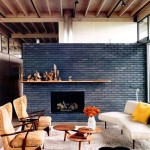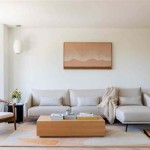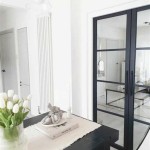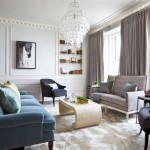Color Schemes for Homes Interior
Selecting the right color scheme for your home interior is a crucial step in creating a space that reflects your personal style and fosters a welcoming and comfortable atmosphere. The interplay of colors can significantly influence the mood, energy, and overall ambiance of your living spaces. A well-chosen color scheme can enhance the architecture, draw attention to specific features, and create a cohesive design aesthetic.
Understanding Color Theory
Before diving into specific color schemes, it is essential to understand some basic principles of color theory. Color theory involves the relationships between colors and how they interact with each other. The color wheel, a circular representation of color hues, serves as a foundational tool for understanding these relationships.
Colors can be categorized into three main groups: primary, secondary, and tertiary colors. Primary colors (red, yellow, and blue) form the basis of all other colors. Secondary colors (orange, green, and purple) are created by mixing two primary colors. Tertiary colors are created by mixing a primary color with a neighboring secondary color.
Beyond color hues, color values (lightness or darkness) and saturation (intensity) also play vital roles in color schemes. Utilizing a combination of these elements allows designers to create visual interest, balance, and harmony within a space.
Popular Color Scheme Options
Numerous color scheme options are available, each catering to different aesthetic preferences and desired outcomes. Here are some popular choices for home interiors:
Monochromatic Color Schemes
A monochromatic color scheme uses different values and saturations of a single color. This approach creates a sense of calm and sophistication, as well as uniformity and visual consistency throughout the space. For example, a monochromatic scheme centered around blue could range from pale sky blue to a deep navy blue, incorporating various shades and tints. This provides visual interest while maintaining a cohesive and serene atmosphere.
Analogous Color Schemes
Analogous color schemes use three colors that are adjacent to each other on the color wheel. These schemes typically offer a sense of harmony and unity, as the colors blend seamlessly. For instance, an analogous color scheme using green, blue-green, and blue would create a refreshing and calming ambiance. This approach is well-suited for living rooms, bedrooms, and spaces where tranquility is desired.
Complementary Color Schemes
Complementary color schemes use two colors that are directly opposite each other on the color wheel. These colors create a high-contrast effect, drawing the eye to focal points and adding a sense of energy and dynamism to the space. For example, red and green are complementary colors. When used together, they can create a visually striking and stimulating environment, ideal for spaces that require a bolder statement.
Triadic Color Schemes
Triadic color schemes utilize three colors that are equidistant from each other on the color wheel. These schemes create a balanced and visually appealing effect, as the colors complement each other without overwhelming the space. For instance, yellow, blue, and red form a classic triadic scheme. This balanced and visually appealing approach is well-suited for creating harmony and vibrancy in various rooms.
Neutral Color Schemes
Neutral color schemes revolve around a foundation of white, black, gray, or beige. These colors are versatile and allow for flexibility in incorporating accent colors or patterns. Neutral schemes are often used as a backdrop to highlight artwork, furniture, or architectural features. They create a sense of peace and tranquility, making them suitable for bedrooms, bathrooms, and spaces where a calming atmosphere is desired.
Choosing the Right Color Scheme for Your Home
When selecting a color scheme for your home, consider the following factors:
*
Personal Style and Preferences:
Embrace colors that resonate with your personality and aesthetic sensibilities. Choose colors that evoke positive emotions and create a space that reflects your unique identity.*
Room Functionality:
Different rooms serve specific purposes. For example, a vibrant and energetic color scheme might be suitable for a living room or playroom, while a more calming and serene scheme might be preferable for a bedroom or bathroom.*
Natural Light:
Consider the amount of natural light your rooms receive. Light colors can brighten up dark spaces, while darker colors can create a cozy and intimate atmosphere in well-lit spaces.*
Existing Furniture and Decor:
Take stock of your existing furniture and decor items. Choose colors that complement these elements and create a cohesive visual flow.*
Architectural Features:
Highlight architectural features such as moldings, fireplaces, or vaulted ceilings by using contrasting colors or accents.By thoughtfully considering these factors and exploring the various color scheme options, you can create a home interior that is both visually appealing and personally satisfying.

Earthy Interior Paint Color Palette

Color Palette For Home 12 Combos Designers Love Havenly Interior Design Blog

20 Modern Home Color Palettes

20 Top Interior Color Schemes For Your House Design Foyr Neo

20 Best Modern Home Color Palettes

Interior Paint Color And Palette Ideas With Pictures Home Bunch Design

Best Interior Paint Colors Whole House Color Scheme Abby Organizes

20 Top Interior Color Schemes For Your House Design Foyr Neo

Tips For Choosing Whole Home Paint Color Scheme

Color Palette For Home 12 Combos Designers Love Havenly Interior Design Blog
Related Posts








